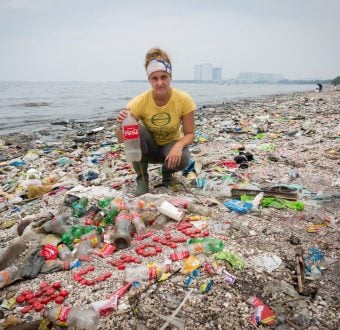Last week, Congress finally decided to discuss the continued threats posed by lax chemical safety and security regulations. The Chair of the Environmental Public Works (EPW) committee, Senator Barbara Boxer (D-CA), stressed that 602 days have passed since the West, Texas, Ammonium Nitrate explosion, with little progress made towards protecting workers and the public.
Boxer pointed out to the panel and senators in attendance that there have been 355 chemical accidents that have resulted in 79 deaths and 1,500 hospitalizations nation-wide. In Boxers home state of California there have been 23 chemical incidents and 96 hospitalizations.
Boxer also mentioned that since President Obama issued an executive order (EO) #13650 to improve chemical safety and security, no agency has taken action and no existing facilities have had to adopt new requirements to address safety and reduce hazardous chemicals.
On the panel at the senate hearing was the head of OSHA, David Michaels, and Mathy Stanislaus, EPAs administrator of the office of solid waste and emergency response.
Both Michaels and Stanislaus were asked questions regarding the delay in responding and when requirements would be introduced. Both provided answers that did not address the core issue of when the public would see measureable and meaningful action.
Stanislaus said that while the agency has not completed most of its regulatory tasks, it will aim to finish by the end of Obamas term.
Michaels referenced the broken regulatory systems that prevents his agency from disclosing when his department would complete rule making.
When Boxer asked Stanislaus if EPA will commit to address Ammonium Nitrate (AN) in its Risk Management Program (RMP), which currently does not include this explosive chemical, Stanislaus responded that the agency was still discussing this.
Boxer responded by saying why wouldnt you know that Its a no brainer.
Box continued to address the failure of progress by the panelists and other agencies. She pointed out that, out of the EOs fifteen proposed actions, six are being proposed for 2015 and later, five have no timeline, and only four have been completed (see EPW chart of EO in action).
Whats at stake
Despite the fact that we know chemical facilities are threats to workers and neighboring communities, and pose a significant risk to children, no federal agency involved has proposed requirements to protect the public.
The risks highlighted at the hearing included data released earlier this year by the Center for Effective Government (CEG) which detailed that one out of three children attend school near a chemical facility in EPAs vulnerability zone. There are 10 million students that attend school in the United States under two hazardous zones overseen by the EPA.
During the hearing Senator Markey (D-MA) released a new analysis of EPA data by the Congressional Research Service which found 466 chemical facilities that each put 100,000 or more people at risk of a disaster. In his statement Markey noted that the EPAs response to the Presidents order lacked new requirements to ensure water treatment and other chemical facilities use safer chemicals and/or processes to prevent future disasters.
The time to act is now and we dont believe that pushing things to the end of President Obamas term is good enough for the safety of workers, communities, and emergency responders. These agencies have had two years to evaluate current regulatory programs and industry continues to operate as business as usual.
As Senator Boxer underscored in her closing remarks there is a lot of talk and not any action.
President Obama has introduced 196 executive orders since 2009 and we think modernizing outdated policies that continue to put human lives in danger is one action that this administration cannot continue to prolong.
We saw the headlines on November 15 about the four workers that died at DuPonts La Porte facility in Houston as a result of an estimated 23,000 pounds of methyl mercaptan, a highly toxic volatile liquid, released. This was the fifth release that has been reported at the La Porte plant. If it can happen at DuPonts La Porte facility, it can happen anywhere.




